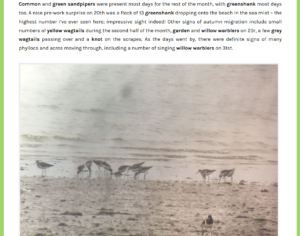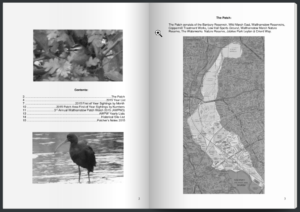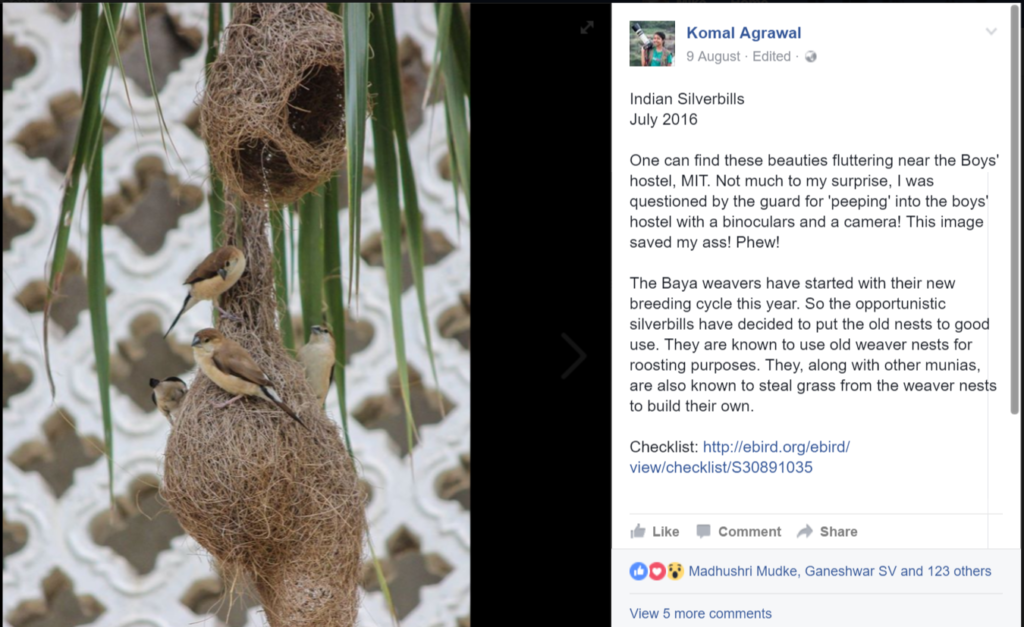This is the fourth part of five in a series of articles from Bird Count India about Patch Birding, following on from Part 3 “How to Record Birds from your Patch”…
Now you are patch birding and gathering some great observations, so let’s share your enjoyment with others! There are lots of ways you can let others know about your discoveries, and hopefully encourage them to start working their own patches too.
Blog

Patch Birding Blog
© Amy Robjohns, Solent Birding
Considering creating your own blog where you can describe the highlights of each visit, show off your habitat and wildlife photos, and of course link to your eBird checklists. A great way to build up a personal diary that you will look back on fondly in years to come.
Gain some inspiration from patch blogs from elsewhere in the world, including various sites in Ireland, Walthamstow and Titchfield Haven in England, Queensland, Australia and central Bangkok, Thailand.
Social Media
Do share interesting observations on Facebook, Twitter, Google+ etc. Rather than just providing a link to your eBird checklist (but do include this as well!), describe some highlights in the text so it is obvious to readers without them leaving the social media site or app. We’d love to read them in the Bird Count India Facebook discussion group also.
eBird Patch Lists
As described in the previous article, using the eBird patch functionality shows a summary of your patch for the current month, year as well as life, and compares your patch together with others who are patch birding in eBird. Currently you can only view the most recent checklist of other patch birders and not their full lists, but this is still useful for comparisons: have they recorded a migrant that you should expect soon for example? Maybe you can make some patch friends?!
Shared Checklists
Take a friend birding to your patch, and share your checklist with them. Maybe they might adopt the same patch – it is always nice to be able to discuss with someone else knowledgeable about the species and area, and it may also introduce some friendly rivalry! Maybe they will adopt a patch of their own in the nearby area?
Patch Report
When you have compiled several observations over a long period it makes sense to analyse and present these in a patch report. It’s an excellent idea to do this annually – based on a calendar year is most convenient for comparisons.
A patch report can be illustrated with photos, sketches etc., and could be posted online. Things to consider including in the report are:
- Description of the patch
- Summary of your effort
- Seasonal highlights
- Annotated species list (i.e. a brief description of the species status based on your observations)
- Bar charts and line graphs to illustrate high counts and seasonal occurrence
- Other wildlife
- Comparisons with previous years

Walthamstow Bird Report 2015
© Walthamstow Birders
Note that the report is a report for the patch itself and not your personal observations, so if other birders visit your patch you should include their observations as well. You should therefore check the eBird hotspot page(s) for your patch to see the various summaries eBird provides.
Check our announcement of how you and your patch can appear in print with our exciting Patch Birding Challenge!





[…] Patch Birding Challenge. Simply register to take part below and write a patch report, based on the ideas discussed in the previous article, that covers the complete winter season: start as soon as possible, and end at the end of April […]